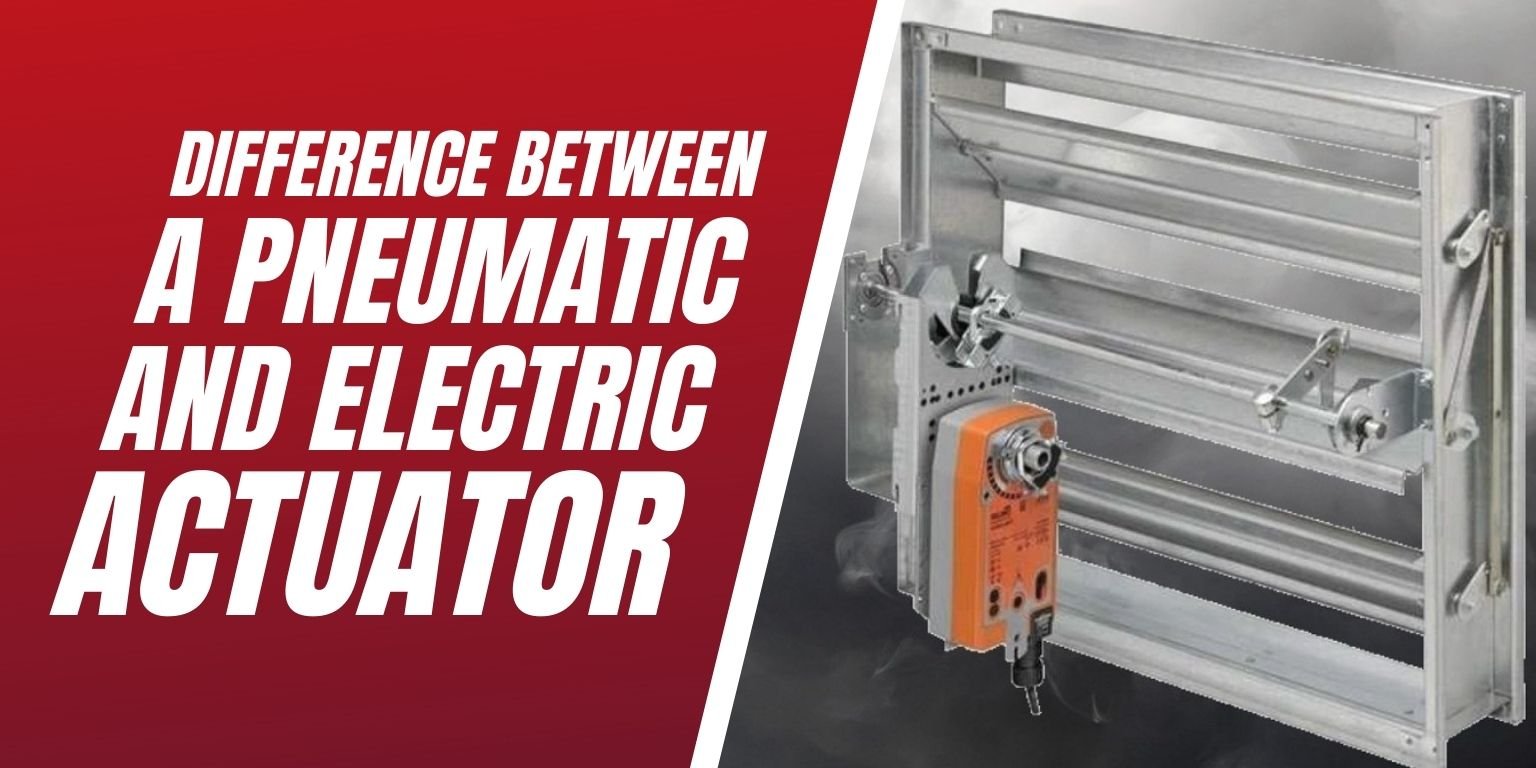
Damper actuators are responsible for ensuring reliable functioning HVAC systems. These actuators are a mechanical device that adjust the position of the damper from open to closed once smoke has been detected. The motion generated by the actuator can be either linear (straight horizontal or vertical motion) or rotary (revolving around a fixed axis).
There are several different types of valve actuators available. However, the most commonly used actuators are electric and pneumatic. Both pneumatic and electric actuators offer unique features and benefits that lend themselves to specific applications. So, what’s the difference between these actuators?
Pneumatic Actuators
Pneumatic actuators air pressure to function properly. When enough pressure has built up in contrast to the outside air pressure, it results in the controlled movement of a device such as a gear. This resulting movement can be directed in either a straight line or circular motion.
Types of Pneumatic Actuators
There are two primary varieties of pneumatic linear actuators: single-acting and double-acting. They both work to push forward a gear, but the main differences are the return method and number of parts.
Single-acting have one port that allows air to flow into the cylinder. The pressure increases and pushes the gear forward or backward, depending on whether it is a push or pull type. A large spring returns it to its original position, preparing it for another burst of pressure. The spring is either positioned inside the cylinder or on the outside. Single-action cylinders are a more straightforward design, are more compact and require half the amount of compressed air to function.
Double-acting operate without a spring and instead have two ports, one on either end of the cylinder. The first application of pressure pushes the gear forward, a step in the process that the two models share. Then, the second burst of pressure on the other side of the cylinder pushes the gear back into place. The device applies pressure back and forth to create a smooth linear motion. Typically, double-action cylinders are better for industrial uses that require speed and strength, as they provide more force at a faster rate.
Benefits of Pneumatic Actuators
- Pneumatic actuators have lower initial costs than the electric variety.
- Their speed and thrust are positively linked, meaning as one increase, the other does as well.
- They are better for industries that need force, electric actuators provide more accurate control and positioning.
Electric Actuators
Electric actuators use electric power to function properly. These actuators are made up of a screw, coupler and motor, such as a stepper or servo. The screw turns and moves a nut, which makes the connecting rod or carriage shift the load.
Where pneumatic actuators are better for industries that need force, electric actuators provide more accurate control and positioning. The standard models of the electric variety can move with precision from hundredths to thousandths of an inch.
Benefits of Electric Actuators
- Electric actuators provide the highest level of efficiency in moderate scales, though they have low operating costs in general.
- The separation of the electrical power source from the actuator makes maintenance easier of the and can minimize replacement costs.
- They produce less noise than other types, making electric models very useful in noise-sensitive environments.
- The standard models of the electric variety can move with precision from hundredths to thousandths of an inch.
Understanding how both the pneumatic and electric actuator work is crucial for determining the best type of actuator for a specific damper. If the actuator doesn’t work properly with the damper, then the damper will not function when it needs to. This leaves an opening for both fire and smoke to travel through your ventilation system and spread through out your facility, causing unnecessary damage.
Contact Us Here or call 888-675-4519 to learn more about the difference between pneumatic and electric actuators.

